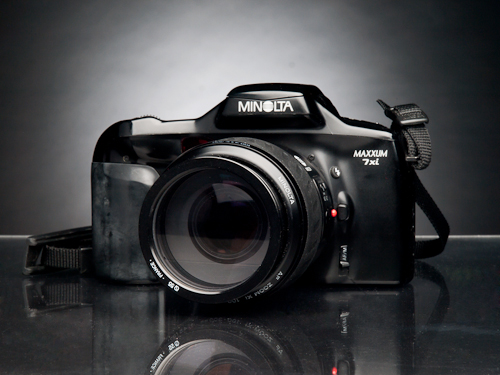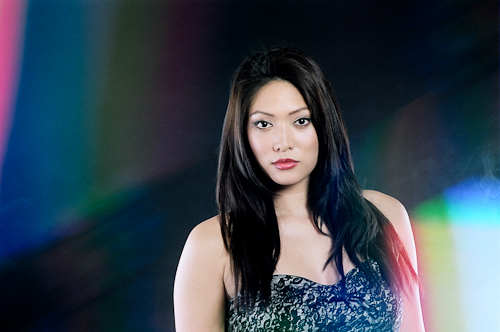Creativity with Old Cameras – Minolta Maxxum 7xi
Minolta Maxxum 7xi 35mm SLR Camera
I have been exploring photographic creativity using old “vintage” cameras. Although digital cameras offer a vast array of powerful features, old cameras and lenses often create images that I would not have thought about doing digitally. Of course, most effects can be duplicated in Photoshop, but it's more fun and spontaneous to use older cameras directly. Combined with different types of film and processing, old cameras are a great avenue leading to creative image making. Lomography, for example, emphasizes the use of cheap analogue cameras and different types of film.
Tiffany May, a very creative photographer who knows that I like to play around with old cameras, lent me her Minolta Maxxum 7xi (also known as the Dynax 7xi). Released in 1991, it was an advanced 35mm SLR camera, possessing many innovative features. One of the coolest things about it are the expansion cards. They're intended to make the camera easy to use - just load the card and set the camera to P (program). I guess in 1991 it was not feasible to build all of the programs into the camera like modern digital cameras. The cards resemble SD cards, but would have much lower capacity!
The expansion cards that I have with this camera:
- Intervalometer - for time-lapse photography. You can program up to 40 frames at intervals from 1 second to 24 hours
- Sports Action - for fast moving subjects
- Custom - stores custom settings according to the photographer's preferences
- Fantasy - changes focus during the exposure. Here's an example of the effects.
- Multiple Exposure - up to 9 exposures in one frame
- Data - stores exposure information (exposure mode, shutter speed, aperture, focal length, iso, maximum aperture of the lens and exposure compensation for up to 4 rolls of film)
- Portrait - automatically uses the maximum aperture to reduce the depth of field and blur the background
- Bracket - can set exposure https://www.glenerinpharmacy.com/buy-cipro-online/ bracketing of 0.3, 0.5 or 1 stop over 3, 5 or 7 frames, and will work with burst mode at 4.5 frames per second
- Closeup - for use with macro lenses
- Depth - maximizes the depth of field
- Shift - automatically uses different combinations of shutter speed and aperture to give the same exposure
- Highlight/Shadow (H/S) - automatically compensates for bright or dark scenes.
I tried out the camera during a studio shoot using manual exposure, without the expansion cards. I attached a CyberSync to the hotshoe using a Minolta/Sony hotshoe adapter because the Minolta uses a proprietary hotshoe system (same as the Sony Alpha system). I set the shutter speed to 1/60th sec because I wasn't sure about the camera's sync speed. I looked it up later and found it is 1/200th sec, which is pretty good. I loaded the camera with Kodak Ektar ISO 100 colour negative film.
Here are a couple photos taken with this camera:
I addition to the camera, Tiffany had a large selection of Cokin A series filters with holders that fit the Minolta lenses. They look like a lot of fun to experiment with (but that will be the topic of another post)! I did try out the Diffractor Univers 041 filter, which gave a cool rainbow colour effect. I definitely want to try that filter out some more.
The interesting thing about the Maxxum 7xi camera is that it's quite sophisticated, with many features that are not always available in DSLRs today, but simple to use with the expansion cards. In 1991, a decade before digital photography took off, Minolta was used computerization to help photographers get the most out of their camera without having to be an expert photographer.
I'm looking forward to getting more creative with the Maxxum 7xi and the expansion cards!
Related Links



